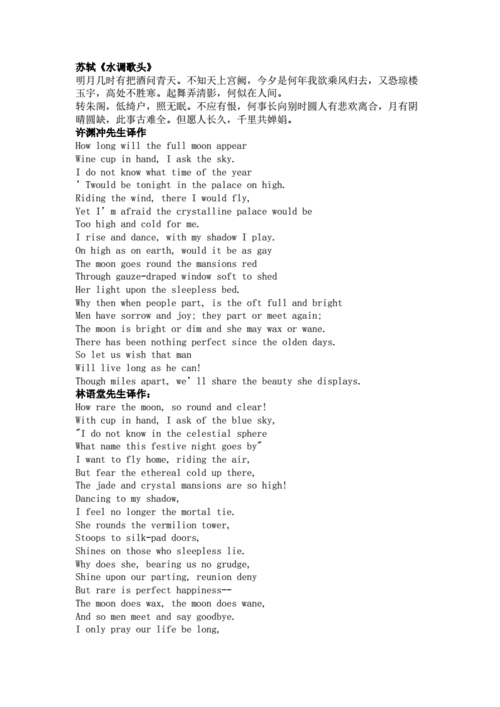
Translating classical Chinese literature into English is a nuanced task that requires a deep understanding of both languages, as well as the cultural context from which the original text emerges. Here, we explore some key considerations and strategies for translating classical Chinese literature into English effectively.
Classical Chinese literature is deeply rooted in Chinese culture, history, and philosophy. Translators must have a profound understanding of these aspects to accurately convey the meaning and essence of the original text. Familiarity with Confucianism, Taoism, Buddhism, and other philosophical schools is essential, as they often influence the themes, imagery, and symbolism found in classical Chinese works.
Classical Chinese is vastly different from English in terms of grammar, syntax, and vocabulary. Classical Chinese texts often employ concise and ambiguous language, relying heavily on context and implication. Translators must navigate these linguistic differences while preserving the poetic and rhetorical qualities of the original text. This may involve making difficult choices regarding word choice, sentence structure, and stylistic elements.
While it is important to make the text accessible to Englishspeaking readers, translators must strive to maintain the authenticity and integrity of the original work. This means preserving cultural nuances, idiomatic expressions, and linguistic peculiarities that are characteristic of classical Chinese literature. Translators must strike a balance between fidelity to the original and readability in English.
Classical Chinese poetry often follows strict structural and tonal conventions, such as the use of tonal patterns, rhyme, and meter. Translating these poetic forms into English presents unique challenges, as English poetry operates under different rules. Translators may need to employ creative techniques such as alliteration, assonance, and rhythm to capture the musicality of the original verse while adhering to English poetic conventions.
Translating classical Chinese literature is not merely a mechanical process of replacing words with their English equivalents; it is an act of interpretation. Translators must delve deep into the text to grasp its underlying meaning, themes, and cultural significance. This requires sensitivity to the nuances of language and an appreciation for the aesthetic beauty of the original work.
Given the complexity of translating classical Chinese literature, collaboration between translators, scholars, and native speakers is often beneficial. Translators can consult with experts in Chinese language and culture to ensure accuracy and authenticity. Beta readers and peer reviewers can provide valuable feedback on the translated text, helping to refine and improve the final product.
Translating classical Chinese literature into English is a challenging yet rewarding endeavor. It requires not only linguistic proficiency but also cultural insight, poetic sensibility, and a deep appreciation for the richness of both languages. By understanding the cultural context, navigating linguistic challenges, maintaining authenticity, adapting poetic forms, interpreting meaning, and embracing collaboration, translators can produce English renditions that capture the beauty and essence of classical Chinese literature.
版权声明:本文为 “四季百科网” 原创文章,转载请附上原文出处链接及本声明;

